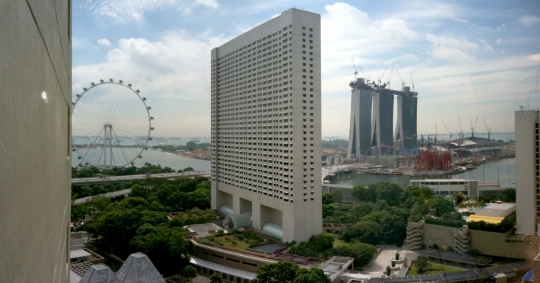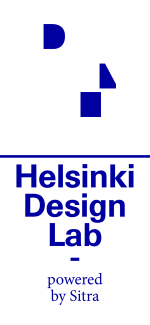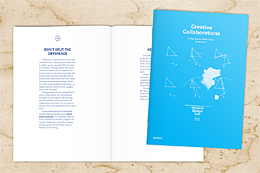Hello from Singapore! The big news is that Helsinki has officially won World Design Capital status for 2012 with its Open Helsinki proposal. We've been chatting with Pekka Timonen off and on as he lead the bid team and it's a real pleasure to congratulate him and everyone on their fantastic work. So while we still have our eyes set on 2010, start marking 2012 on your calendar too.
In honor of the win, the last day of ICSID World Design Congress saw a bit of a Finnish invasion with The mayors of Helsinki and Espoo as well as representatives from the Foreign Ministry, Helsinki Design Week, the Design Forum, Taik, and Marco and I representing Sitra and HDL. Yrjö Sotamaa was so excited he ran around the congress hall with the World Design Capital flag trailing him like a cape.
The format of the congress was interesting for us to see since it has some resonance with how we're preparing HDL 2010. A series of "studios" were organized in the year prior to this week, each with the task of envisioning life in 2050 as it relates to a number of focus areas ranging from agriculture to entertainment. The studio heads took widely different approaches to their work. Some seemed to really get into the format and developed research seminars around their efforts, others seemed to have simply added a few new slides to their default presentation decks. Some presented plausible scenarios rigorously argued and supported with well-cited evidence, others relied more on the whims of the presenter to sketch out a possible future. The degree to which foresight work delivered by foresight experts dominated the two days of conversation that I attended highlighted the extent to which design practice has been focused on current day and immediate-future realities. Designers generally aren't in the habit of proposing floating-car futures any more, are they? Is this good, bad, or gray?
The congress reminded me of Jim Dator's Four Generic Images of the Future, a useful framework that Stuart Candy introduced to me at the University of Hawaii back in March. Stuart underlined a simple fact: if we're not in the habit of imagining the future we have a much harder time manifesting a desirable one. The work that Stuart and his colleagues are doing is essential and seems like ripe territory for collaboration with designers. Thinking about the future gets at ethics in a novel way: if you can imagine anything, why are you imagining this specific thing?
The ethics of design practice was a recurring theme both here in Singapore and last weekend in Torquay. If designers become more involved in projects with a broader social impact – and particularly if they begin to find themselves at the table of political decision makers – the stakes of our work become very high. Personally, I believe that conscientious, talented people generally rise to the challenges they are given and there's nothing better to prove your mettle than to have it tested. Still, I'd like to see the conversation about ethics of design move to a more nuanced level.
The work of groups like Architecture For Humanity is fantastic, but doing pro-bono projects for under-served populations is not the only option for ethical practice. A binary argument between good and evil design practices may do more harm than good by allowing lines to be drawn and sides to be taken that are almost religious in their fervor. In that sense, what I'm lamenting is the lack of ethical debate about how and why we conduct our work rather than ethical judgment.
The conversation took an unexpected turn in Singapore when Chris Bangle and a few others speakers argued that the congress was filled with too much doom and gloom. "You can't push someone to make significant changes in their life," Chris argued, "you have to pull them." In other words, we need to find ways to seduce the planet to live sustainably rather than guilting them into it. Probably need a bit of both, don't you think?

A view over Singapore's developing waterfront snapped in between conference sessions.
Together with the Idea Factory we hosted an HDL dinner with some fantastically interesting people for all over Singapore. Ban Y J – the bon vivant, designer, and entrepreneur behind Stikfas – emphatically spoke about the need help designers break through the "surface tension" between being a garage start up and a viable market entity. In his words, marketing is the key to "raising a hand up and being seen." Particularly in countries with small home markets like Finland and Singapore, breaking through that barrier is critical for long term success. But perhaps even social issues need the right marketing campaign to give them the appropriate chance to survive in this crowded world. Responding to Joanne Yap's introduction of Jurong General Hospital's move from "an illness focus to a wellness focus," Ban asked how you entice people towards wellness? One key strategy is persistent and open community engagement, something Jurong has already started: how many hospitals exist on Facebook before they are entities in the real world?


